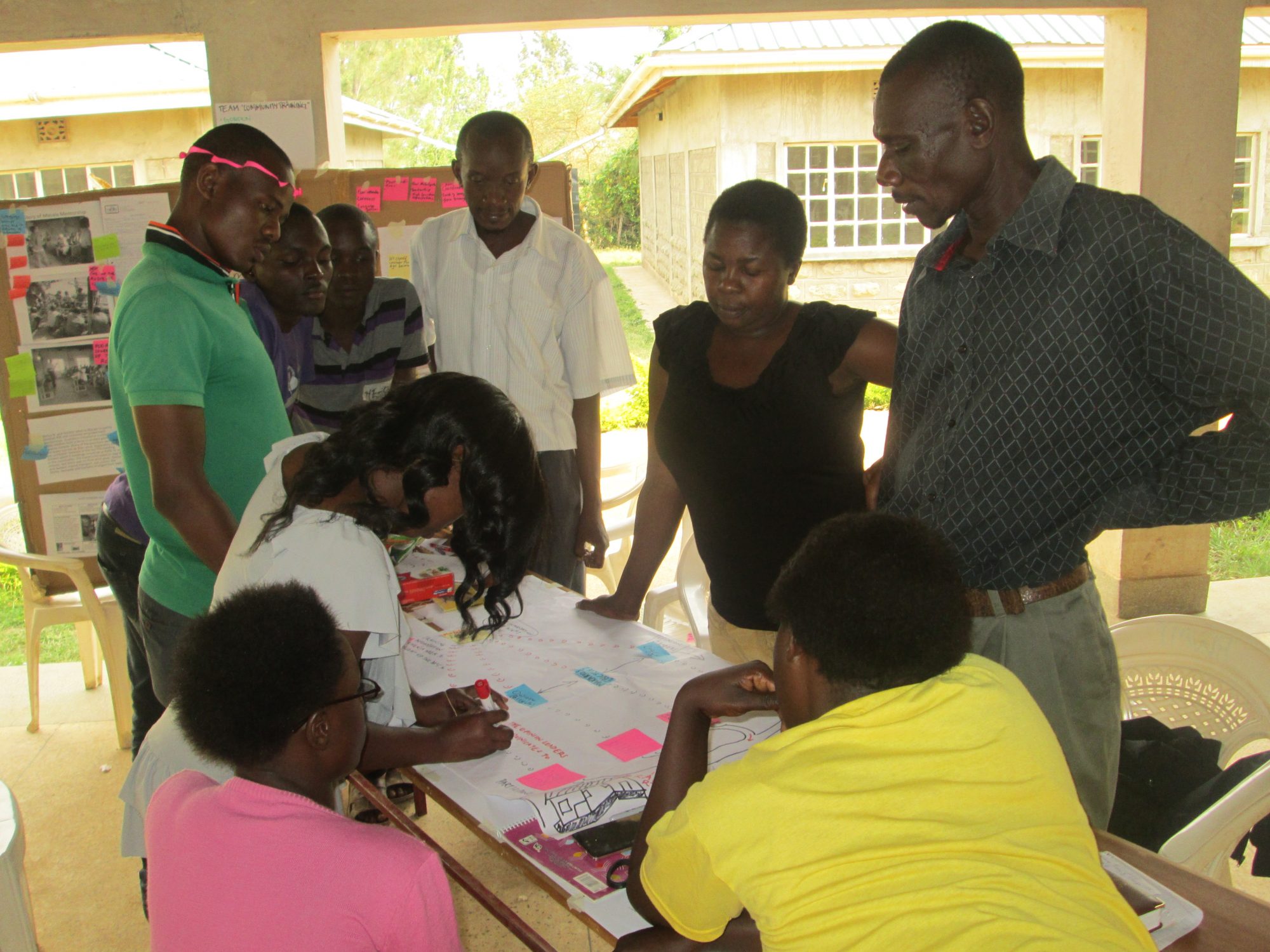“Today, we are all human-centered designers,” one participant proclaimed at the end of an all-day workshop. Others around him nodded; some cheered. The mood in the room was giddy exhaustion, brought on by hours of hard work and creative effort.
It was August. I’d been in Kenya since June, facilitating and researching the uptake of human-centered design (HCD) in development practice. At that moment, I felt proud and extremely humbled – it had been a long journey.
HCD is a methodology for collaborative and empathetic problem-solving. It constitutes a design-based work philosophy, practical methods, and a discrete innovation process. To learn more about HCD (also known as design thinking) start here and here.
I, and other HCD champions, hope its diffusion will enable the global aid community to deliver better solutions for end-users. But as a scholar, I don’t drink the kool-aid on development trends. I look critically at the diffusion and effects of de rigueur practices.
Just thinking of those open-source toolkits, the upbeat workshops, the colorful post-its, I ask myself: what does HCD’s spread actually mean for everyday people engaging with complex social issues? What value will it have to non-designers, and how do we reach interested professionals? How might we bring it into organizations? From structuring trainings to facilitating innovation processes and building collaborative work environments, what does uptake actually take?
I don’t claim to answer all those questions here. But my experience organizing a “Design Day” training event with community development practitioners revealed an important lesson about cross-cultural facilitation and introducing new practices: as the change agent, sometimes you have to take a step back (i.e., work through other change agents).
The Changemaker Catalyst Award enabled me to augment my professional development experience as an HCD facilitator. With the award, I took what I learned from pilot work last year to improve this year’s training efforts. One new approach I used was bringing out a Kenyan HCD trainer from iHub – a tech incubator in Nairobi – to lead Design Day.
I anticipated that Frankline would help me tailor the language and delivery of HCD to a Kenyan audience. I thought he might explain the concepts in a new way, and employ a different pedagogical style. I also thought participants would understand HCD better hearing it in their national tongue, Swahili.
I was right, but not completely. Frankline’s most important contribution was familiarity. He was relatable. Participants were excited to see a Kenyan professional using HCD locally. He embraced HCD, which legitimized it. And most importantly, he showed them they belonged to a thriving network at home.
But don’t mistake the role of familiarity. Or novelty. Having an American facilitator and a new concept originally generated interest among participants. But after multiple trainings, participants were tired of hearing about HCD from me. I became a part of the group, but not in all the important ways.
A new facilitator introduced a fresh perspective on learned concepts, and made it more acceptable. When Frankline delivered the same content, it reinforced what I said previously. When he brought something new, it added nuance to their understanding.
People can be insiders and outsiders at the same time and in different ways, and those small differences matter. All I know is that at that time, it was the right time to introduce different actors into the capacity-building process.
By the end of Design Day, it was a complete coup. The participants were running the show and calling the shots, deciding when and how to present their ideas, and how to get feedback. Frankline and I both looked on in amazement and took a much-needed seat. Somehow in the complicated process of building buy-in, we got more than we bargained for: ownership. They didn’t let us go home until well after the workday ended.
SaveSave



